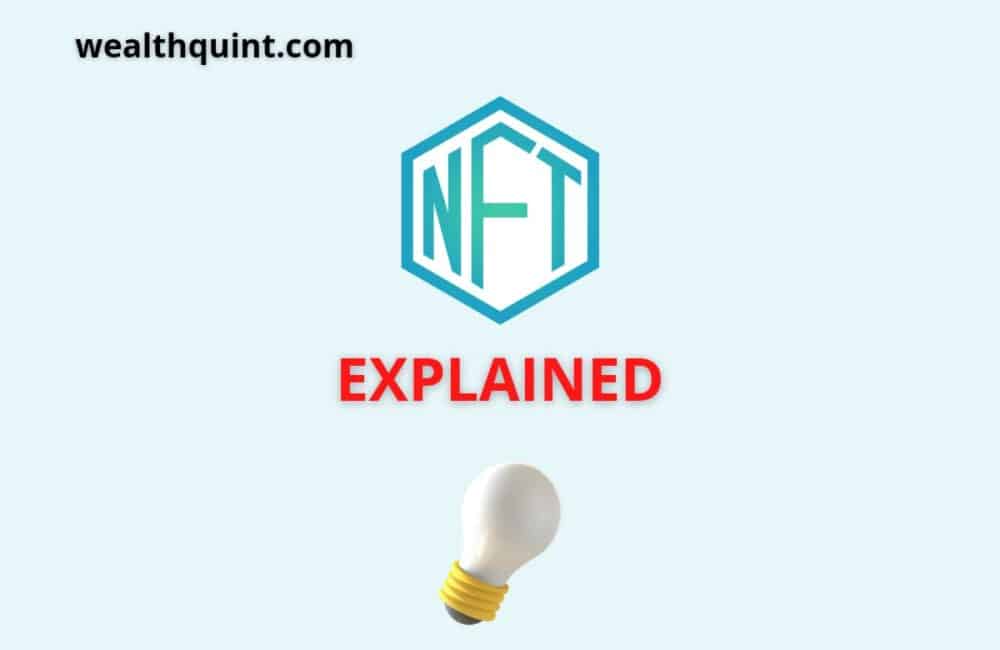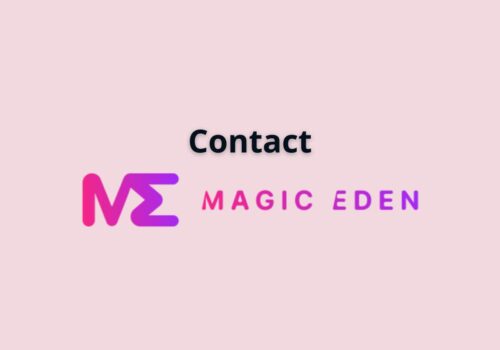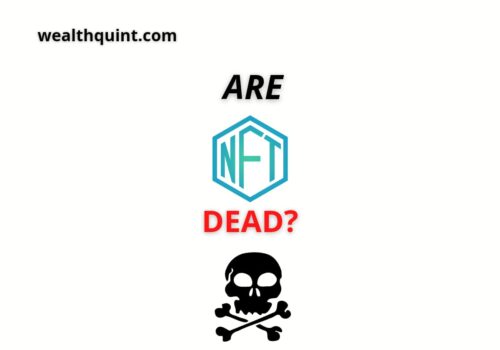Today, NFTs may represent an exceptional innovation for artists seeking to create and monetize their work. Through virtual galleries, collectors can display their treasures artfully and efficiently to the world while storing and preserving value.
There is also the possibility that this is simply an impressive trend, expressing the whims of the nouveau riche, the newly minted multi-millionaires of the crypto bull market, having fun with their newly acquired, substantial gains.
Rather than looking at the phenomenon from its inception and humble beginnings to its most recent heights and financial successes, let’s analyze its potential from every angle.
A Non-Fungible Token, or NFT, is a unique token that represents a unique item rather than fungible tokens that can be swapped, such as a cryptocurrency such as Bitcoin.
History Of NFT
The NFT is a unique number among a series of limited editions of an item or a one-of-a-kind item. Collectibles of almost any type can be subjected to an NFT, including digital artwork, music, poetry, video, a book, or even a Tweet.
They create verifiable digital ownership and scarcity using the Ethereum Network and ERC 721 tokens.
With the introduction of “Colored Coins” in December 2012, we now have the concept of NFTs — interestingly enough, a project Vitalik Buterin, the creator of Ethereum, helped build on the Bitcoin blockchain.
This technology allows real-world assets, such as real estate to be issued on a blockchain. The scripting language limitations of Bitcoin were insufficient for sustaining the application.
But Colored Coins were a stepping stone to successful NFTs in the future, enabling experimentation and laying the foundation for successful NFTs.
Several years later, in 2014, Counterparty, an open-source, peer-to-peer financial platform, was launched—several projects with its assets, such as trading cards and memes.
Through Counterparty, the Spells of Genesis developers issued the first in-game assets on a blockchain in 2015.
The recognizable green frog “Rare Pepes” appeared on Counterparty memes issued as collectibles by October 2016.
On the Ethereum blockchain, CryptoPunks launched the world’s first marketplace for rare digital art in October 2017. A creator of the project displayed 10,000 cartoon characters that anyone with an Ethereum wallet could claim.
There was a robust secondary market where collectors could trade them for higher prices after they were all claimed. A hybrid of the ERC20 and ERC721 Ethereum tokens was employed to create the Cryptopunk NFTs since the ERC721 wasn’t yet developed.
CryptoKitties’ success in 2017 marked the mainstreaming of NFT, raising $12.5 million in investment. CryptoKitties are breedable virtual cats.
The animals have a unique number and 256-bit distinct genome with DNA and different traits – “attributes” (patterns, mouth shapes, fur, eye shapes, base color, accent color, etc.) – that they pass on to their digital offspring.
CryptoKitty-related trading, breeding, and buying reached almost 5,000 ETH during the height of CryptoKitty’s popularity.
In a short period, CryptoKitties became so popular that the number of pending Ethereum transactions increased by over 10%, overwhelming other applications and threatening to crowd them out.
Ethereum miners responded by increasing the gas limit, allowing more data per block and more transactions per second. Platforms like OpenSea and RareBits sprung up in response to this new phenomenon.
Bitcoin-inspired collectibles like CryptoKitties have been featured by the German museum “ZKM Center for Art and Media Karlsruhe” as a prime example of blockchain being used to create art.
Also Read: NFT Smart Contracts Explained
What Is NFT
NFT tokens can be defined as cryptographic tokens that exist on the blockchain and cannot be replicated. They cannot be exchanged or traded at equivalent value unlike cryptocurrencies.
Unlike fungible tokens such as Bitcoins, which are identical to each other, these can be used as a medium for commercial transactions.
Benefits Of NFT
Non-fungible tokens OR NFTs is the most recent buzzword in the blockchain industry. The crypto world is experiencing an exciting offshoot with them.
In spite of all the excitement surrounding these events, you may naturally wonder whether they are beneficial.
Let’s look at how NFTs can benefit you:
1. Decentralized Market
An agent is essential when selling and marketing a piece of art in the art world. With NFTs, artists or the original creators can engage directly with their customers and eliminate these middlemen.
Creators can earn money directly from their work with NFTs. The creators will also benefit from this model since they will earn a commission each time an NFT is traded.
2. Unique
Artists and sellers usually have a few NFTs as opposed to thousands. As such, it’s safe to say that you’ll be among the few people who will have these items. It is so rare that there can be only one, and it cannot easily be faked.
3. Collectibles
Technically, every NFT is a collectible. Because each is unique, only one is created. They will increase in value over time if you hold on to them after purchasing them.
4. Resalable
NFTs are popular because they offer the opportunity to make money. The resale of them is a source of income for many people. NFTs can be sold for huge profits if you invest in their resale value.
The original buyer of some of these collectibles invested only a few thousand dollars when they were resold for more than 20,000 dollars.
5. Immutable
No one can alter the token’s metadata. Their data will always remain intact as their storage lasts forever.
That alone makes them collectible and valuable. Furthermore, it cannot be misplaced, destroyed, or removed from the blockchain.
6. Copyright
The NFT technology is perhaps most advantageous for artists and content creators since it allows them to fully own their work. Artists and content creators can make money without granting up their copyrights. Most licensing agreements do not allow this.
7. Security
NFTs come with a guarantee of security. Due to their decentralized nature, blockchains’ data is stored on nodes worldwide.
Each node of the database has an identical record. The network will always be recorded somewhere, even when it is down.
Also Read: NFT Royalties: Whar are They and How do They Work?
NFT Examples
1. Beeple’s “Everyday: The First 5000 Days”
Beeple’s NFT artwork was featured at the first international NFT auction house. A huge $69 million was paid for this asset by Christie’s.
2. William Shatner’s Memorabilia
A collection of actor William Shatner’s items has been released on the NFT website. In 9 minutes, Shatner sold 125,000 copies, including early headshots, a photo of him hugging Star Trek co-star Leonard Nimoy, and a digital X-ray of his teeth.
3. Grimes WarNymph
Artist Grimes earned $5.8 million from selling a collection of ten NFTs. Among the top-selling assets was a unique video called “Death of the Old” that sold for $389,000.
4. Glenfiddich Whisky
NFT’s renditions of 15 bottles of 46-year-old Glenfiddich whisky sold for $18,000 apiece recently from distillers William Grant and Son. In addition to serving as an ownership document, the NFT allows owners to show off their purchases.
5. Jack Dorsey’s First Tweet
The very first tweet ever sold by Twitter CEO Jack Dorsey happened on the launch day of Twitter in March 2006. An NFT was sold for about $3 million.
Dorsey says that a charity organization called GiveDirectly will then receive the money in bitcoin.
6. Furniture NFTs
In open worlds like Decentraland or Minecraft, Argentine designer Andrés Reisinger creates furniture that people can use as NFTs. A little under $70,000 was the highest price for Reisinger’s most expensive piece.
7. NBA Shots Sport Collectibles
They are an NFT marketplace where you can buy, sell, and trade videos of NBA moments. They are currently the highest-earning asset, selling for $387,000.
LeBron James dunking against the Houston Rockets is their top-earning asset, selling for $58,900.
8. RTFKT’s Digital Sneakers
Players’ online gaming avatars can purchase virtual sneakers from RTFKT for up to $10,000. RTFKT, in collaboration with Another Artist named Fewocious, collected $3.1 million in a matter of minutes in March 2021.
9.Taco Bell GIFs
Using food from their menu as inspiration, Taco Bell commissioned GIFs to be sold online as NFTs. Minutes after the launch, Taco Bell’s tokens had sold out, and all proceeds from the sales went to Taco Bell’s charity, the Taco Bell Foundation.
Also Read: NFT Smart Contracts Explained
NFT Features
1. Unique
Token metadata usually stores a unique property for each NFT. No two NFTs are alike, and every NFT has its unique characteristic. A .jpg file copy of an original image is the same as the original.
2. Scarce Digital Resource
Blockchain networks are used to store NFT. Therefore, digital assets can be proven to be owned by the correct party on multiple networks thanks to the certificate of ownership.
3. Indivisible
A fraction of an NFT cannot be bought or transferred; the denominations of NFTs cannot be split or transferred.
4. Ownership
Tokens ensure the transfer of ownership of assets.
5. Fraud Proof
NFT are fraud-proof and easily transferable.
Why Do People Buy NFTs?
People buy NFTs because they know the technology underpinning them is valuable, so they spend millions on them. Once an NFT has been credited, it cannot be revoked or modified once recorded on a blockchain.
When purchasing items such as works of art, limited-edition media, and so forth, it is especially important to follow this rule.
NFTs provide a certain level of assurance since they are difficult to copy. Non-fungible tokens (NFT) of real-world assets ensure sole ownership.
NFTs attract customers due to their unique qualities. Artists typically produce limited edition NFTs in limited numbers, and consumers are willing to pay more for them.
Many of the items that are marketed as NFTs are themselves rare. Due to the fact that top painters only mint their exclusive paintings once as NFTs, and Jack Dorsey only tweeted on his first day, people are likely to pay more for these.
NFTs also give artists more privacy and control and improve fan connection.
Normally, artists would have to go through a broker or dealer to sell their work, but by selling NFTs, artists can engage with fans directly and have better control over their work.
NFTs are a great way to trade collectibles, such as artwork or in-game assets, in various ways. A long time ago, the value of these objects has been questioned, with many questioning whether it is wise to spend millions on a real-life painting or ancient antiquities.
Moreover, NFTs are linked inextricably to the collectibles market, which has flourished for generations.
These items are valuable to someone who loves art or memes and worth paying for. Thus, we should expect more products to be made available as NFTs in the future.
As long as buyers are interested in the items being minted as NFTs and as long as NFTs continue to provide innovative means for purchasers to acquire them, the value of NFTs will likely last for years.
Final Thoughts
Using NFT technology, you can rest assured that there are always active nodes despite what may happen to the blockchain. Consequently, data cannot be compromised.
They make a lot of money and make a lot of money by securing money. NFT blockchain technology is undeniably lucrative because of its multitude of advantages.
As well as benefitting the creators, they also benefit resellers. NFTs appear to have a lot of potential for becoming a vital part of many industries in the future.




